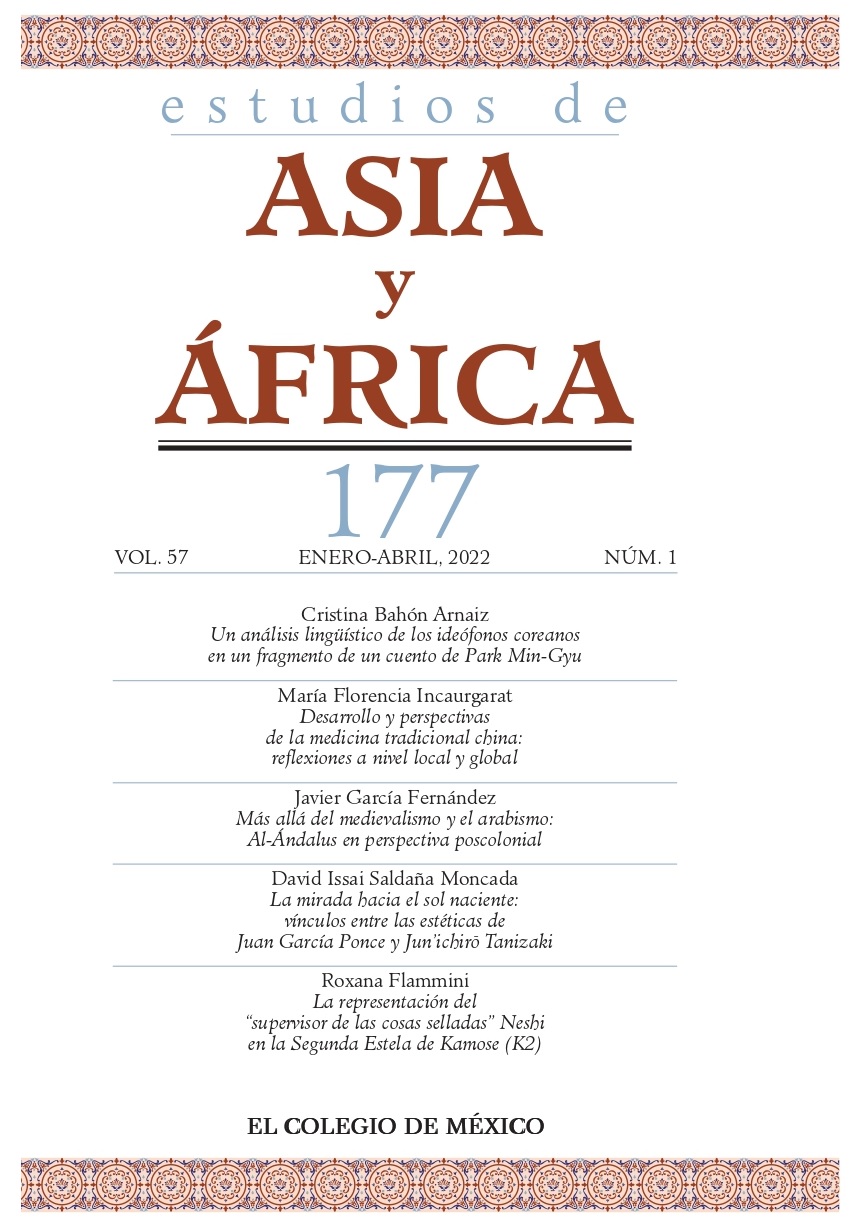Resumen
El presente artículo explora tres ejes en relación con la medicina tradicional china a nivel local y global. En un primer momento, se realiza una genealogía de este saber milenario, desde sus orígenes (registrados) hasta la actualidad, con énfasis en los encuentros con la llamada “medicina occidental” y en cómo su llegada terminó por fortalecer el saber nativo y crear una “nueva geografía”. En segundo lugar, se exploran las diversas formas como los ciudadanos chinos se apropian de ambos sistemas médicos en la China contemporánea. Por último, se hace un acercamiento a la expansión global de este saber, por medio de su comoditización o como recurso potencial de soft power. De esta forma, se pretende colaborar en un campo poco explorado desde las ciencias sociales, sobre este corpus de prácticas y conocimientos, su dinamismo y su constante modificación.
Referencias
Dong, Jingcheng. 2013. “The Relationship between Traditional Chinese Medicine and Modern Medicine”. Evidence-Based Complementary and Alternative Medicine 2013. https://doi.org/10.1155/2013/153148
Faier, Lieba y Lisa Rofel. 2014. “Ethnographies of Encounter”. Annual Review of Anthropology 43 (1): 363-377. https://doi.org/10.1146/annurev-anthro-102313-030210
Fang, Xiaoping. 2012. Barefoot Doctors and Western Medicine in China. Woodbridge: Boydell & Brewer.
Farquhar, Judith. 1994. Knowing Practice: The Clinical Encounter of Chinese Medicine. Oxford: Westview Press.
Fu, Louis. 2014. “Hippocratic Medicine in China: Comparison with a 9th Century Chinese Manual on Bone Setting”. Journal of Orthopaedics, Trauma and Rehabilitation 18 (2): 128-135. https://doi.org/10.1016/j.jotr.2014.09.001
Green, Gill, Hannah Bradby, Anita Chan y Maggie Lee. 2006. ‘‘We are not Completely Westernised: Dual Medical Systems and Pathways to Health Care among Chinese Migrant Women in England”. Social Science & Medicine 62 (6): 1498-1509. https://doi.org/10.1016/j.socscimed.2005.08.014
GriffFFiths, Sian, Vincent Chung y Jin Tang. 2010. “Integrating Traditional Chinese Medicine: Experiences from China”. Australasian Medical Journal 3 (7): 385-396. https://doi.org/10.4066/AMJ.2010.411
Growth Analysis. 2013. “China’s Healthcare System: Overview and Quality Improvements” (Direct response 2013:03). Östersund: Swedish Agency for Growth Policy Analysis. http://www.tillvaxtanalys.se/in-english/publications/direct-response/direct-response/2013-05-20-chinas-healthcare-system-----overview-and-quality-improvements.html
Hesketh, Therese y Xing Zhu Wei. 1997. “Health in China:Traditional Chinese Medicine: One Country, Two Systems”. British Medical Journal 315 (7100): 115-117 https://doi.org/10.1136/bmj.315.7100.115
Incaurgarat, María Florencia. 2017. “El ‘viento’ como agente generador de padecimiento. Reflexiones sobre el periodo de posparto en relación al ‘pensamiento chino’”. Avá 29: 175-197. www.ava.unam.edu.ar/images/29/n29a07.pdf
Jackson, Mark, ed. 2011. The Oxford Handbook of the History of Medicine. Oxford: Oxford University Press. https://doi.org/10.1093/oxfordhb/9780199546497.001.0001
Lei, Sean Hsiang-lin. 2000. “When Chinese Medicine Encountered the State, 1928-1937”. Tesis de doctorado. Universidad de Chicago. http://www.ihp.sinica.edu.tw/~medicine/active/years/hl.PDF
Li, Deli, Shanshan Qiao, Duozhi Shi, Shiqi Zheng, Tengyu Wang y Rufeng Wang. 2016. “The Combination of Traditional Chinese Medicine with Western Medicine”. Medicinal & Aromatic Plant 5 (6). https://doi.org/10.4172/2167-0412.1000e179
Liao, Yuqun. 2017. Traditional Chinese Medicine: Understanding its Principles and Practices. Beijing: China Intercontinental Press.
Liu Diangang y Mao Herong. 2015. “‘One Belt and One Road’ Strategy: Opportunities for International Communication of Traditional Chinese Medical Culture”. China Daily, 28 de enero de 2015. http://www.chinadaily.com.cn/culture/2015-01/28/content_19430421.htm
Macdonald, Alexander. 2017. “Relationship of Modern and Traditional Schools of Chinese Medicine: Need it Remain Hostile?”. International Journal of Complementary & Alternative Medicine 7 (2): 00220. https://doi.org/10.15406/ijcam.2017.07.00220
Menéndez, Eduardo. 2003. “Modelos de atención de los padecimientos: de exclusiones teóricas y articulaciones prácticas”. Ciência & Saúde Coletiva 8 (1): 185-207. https://doi.org/10.1590/S1413-81232003000100014
Moreno García, Julia. 2018. China contemporánea: 1916-2017. 2ª ed. Madrid: Istmo.
Organización Mundial de la Salud. 2008. “China’s Village Doctors Take Great Strides”. Bulletin of the World Health Organization 86 (12): 909-988. https://doi.org/10.2471/BLT.08.021208
Pratt, Mary Louise. 1992. Imperial Eyes. Travel Writing and Transculturation. Londres: Routledge.
Puerta, José Luis. 2009. “El canon de medicina interna del Emperador Amarillo”. Dendra Médica. Revista de Humanidades 8 (1): 100-106. https://dialnet.unirioja.es/servlet/articulo?codigo=4369903
Schnell, James A. 1989. “The Merging of Traditional Chinese Medicine and Western Medicine in China: Old Ideas Cross-Culturally Communicated Through New Perspectives”. Explorations in Ethnic Studies 12 (1): 41-45. https://doi.org/10.1525/ees.1989.12.1.41
Song, Jingli. 2018. “Boosted by Belt and Road Initiative, Spread of TCM Speeds up”. China Daily, 4 de junio de 2018. http://europe.chinadaily.com.cn/a/201806/04/WS5b14ab0fa31001b82571dfaf.html
Tan, Xiaodong, Xiangxiang Liu y Haiyan Shao. 2017. “Healthy China 2030: A Vision for Health Care”. Value in Health Regional Issues 12: 112-114. https://doi.org/10.1016/j.vhri.2017.04.001
Taylor, Kim. 2011. Chinese Medicine in Early Communist China, 1945-63: A Medicine of Revolution. Londres: RoutledgeCurzon.
Tsing, Anna Lowenhaupt. 2005. Friction: An Ethnography of Global Connection. Princeton, NJ: Princeton University Press. https://doi.org/10.1515/9781400830596
Unschuld, Paul U. 2003. Huang Di nei jing su wen: Nature, Knowledge, Imagery in an Ancient Chinese Medical Text. Berkeley: University of California Press. https://doi.org/10.1525/9780520928497
Wei, Chunjuan Nancy. 2013. “Barefoot Doctors: The Legacy of Chairman Mao’s Health Care”. En Mr. Science and Chairman Mao’s Cultural Revolution, editado por Chunjuan Nancy Wei y Darryl E. Brock, 251-280. Lanham: Lexington Books.
Xu, Sanchun y Danian Hu. 2017. “Barefoot Doctors and the ‘Health Care Revolution’ in -Rural China: A Study Centered on Shandong Province”. Endeavour 41 (3): 136-145. https://doi.org/10.1016/j.endeavour.2017.06.004
Zhan, Mei. 2009. Other-wordly. Making Chinese Medicine through Trasnational Frames. Durham: Duke University Press. https://doi.org/10.2307/j.ctv1198xrp
Esta obra está bajo una licencia internacional Creative Commons Atribución-NoComercial-SinDerivadas 4.0.
Derechos de autor 2022 Estudios de Asia y África



